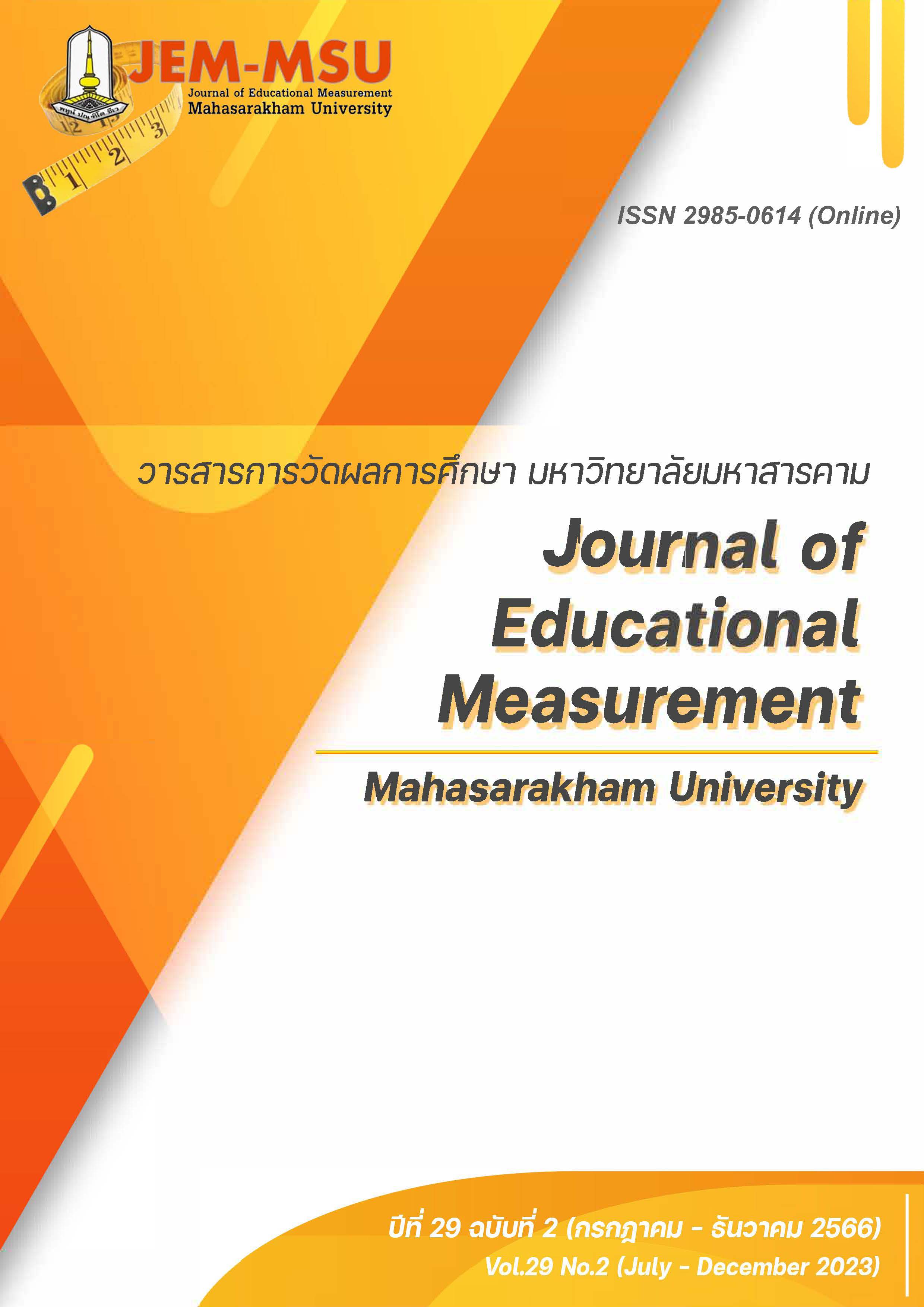Development of the Performance Evaluation Model for Probation Office, Department of Probation, Ministry of Justice
Main Article Content
Abstract
The objectives of this research were 1) to develop a performance evaluation model and find its quality, for the Probation Office, Department of Probation, Ministry of Justice; 2) to try out the performance evaluation model that had been developed; 3) to evaluate the performance evaluation model. The researcher conducted the research according to the research and development process and applied the EDFR technique to examine the propriety and feasibility of the performance evaluation model. The tools used for data collection were interview forms and questionnaires. Data were analyzed by content analysis, mean, standard deviation, median, inter-quartile range and Pearson’s product-moment correlation coefficient.
The research results were as follows: The performance evaluation model for Probation Office, Department of Probation, Ministry of Justice, had 6 main components; there were 3 evaluation objectives, 10 components of the evaluation-focused aspects, 167 indicators, 7 groups of evaluators, 3 evaluation methods, 4 levels of evaluation criteria, and 3 methods of providing feedback. On the whole, the model had the propriety and feasibility at the highest level ( = 4.56, S.D. = 0.45). The reliability of evaluation results, by switching evaluator groups, the reliability of the test-retest technique was obtained. There was a statistically significant positive correlation at the level of .01. The correlation coefficient was .947. And the results of the performance evaluation model for Probation Office, Department of Probation, Ministry of Justice from the evaluator groups, on the whole, yielded propriety, feasibility, utility and overall accuracy at a high level (
= 4.44, S.D. = 0.85).
Article Details

This work is licensed under a Creative Commons Attribution-NonCommercial-NoDerivatives 4.0 International License.
The content and information contained in the published article in the Journal of Educational Measurement Mahasarakham University represent the opinions and responsibilities of the authors directly. The editorial board of the journal is not necessarily in agreement with or responsible for any of the content.
The articles, data, content, images, etc. that have been published in the Journal of Educational Measurement Mahasarakham University are copyrighted by the journal. If any individual or organization wishes to reproduce or perform any actions involving the entirety or any part of the content, they must obtain written permission from the Journal of Educational Measurement Mahasarakham University.
References
Getzels, J.W., & Guba, E.G. (1968). Education Administration as a Social process. Harper & Row.
Hoy, W.K., & Miskel, C.G. (2001). Educational Administration Theory Research Practice (6th ed.). McGraw-Hill.
Nevo, D. (1983). The Conceptualization of Educational evaluation: An Analytical Review of the literature. Review of educational research, 53 ,117-128.
Siripong, S. (2005). Principles of educational administration: Theory and practice (2nd ed.). Book point.
Stufflebeam, D.L., & Shinkfield, A.J. (2007). Evaluation Theory, Models, & Application. John Wiley.
Vappu, T.L. (1988). Insiders and Outsiders: Women’s Movement and Organizational Effectiveness. Canadian Review of Sociology and Anthropology, 33(3), 391-410.
Announcement of the Probation Committee on National Standards for Probation Practices. (2019, February 13). Royal Gazette. Volume 136, Special Section 41D. Page 12. https://www.moj.go.th/attachments/20210223135537_02479.PDF (in Thai)
Department of Probation, Research and Development Institute. (2011). Study report on the development of the Probation Department towards professionalism. n.p. (in Thai)
Fongsri, S. (1999). A Development of the organization effectiveness evaluations model for non-formal vocational education of government organizations [Doctoral dissertation]. Chulalongkorn University. (in Thai)
Kanjanawasee, S. (2011). Appraisal Theory (8th ed.). Chulalongkorn University Press. (in Thai)
Ministerial Regulations on Division of Probation Department Ministry of Justice B.E. 2018. (2018, May 25). Royal Gazette. Volume 135, Chapter 37 A. Page 10-15. http://www.oic.go.th/FILEWEB/CABINFOCENTER2/DRAWER030/GENERAL/DATA0000/00000648.PDF (in Thai)
Mookdee, S. (2011). The Development of an evaluation model for research and development institutes of Rajabhat University [Doctoral dissertation]. Naresuan University. (in Thai)
Panya, P. (2017). Statistics for research. Tasila Printing. (in Thai)
Phomjui, S. (2003). Project Evaluation Techniques (4th ed.). Sukhothai Thammathirat Open University Press. (in Thai)
Probation Act B.E. 2559 (2016). (2016, October 3). Royal Gazette. Volume 133, Chapter 88 A. Page 2-13. n.p. (in Thai)
Srisa-ard, B. (2013). Basic Research (9th ed.). Suweeriyasan. (in Thai)
Worakham, P. (2021). Educational Research (13th ed.). Tasila Printing. (in Thai)


